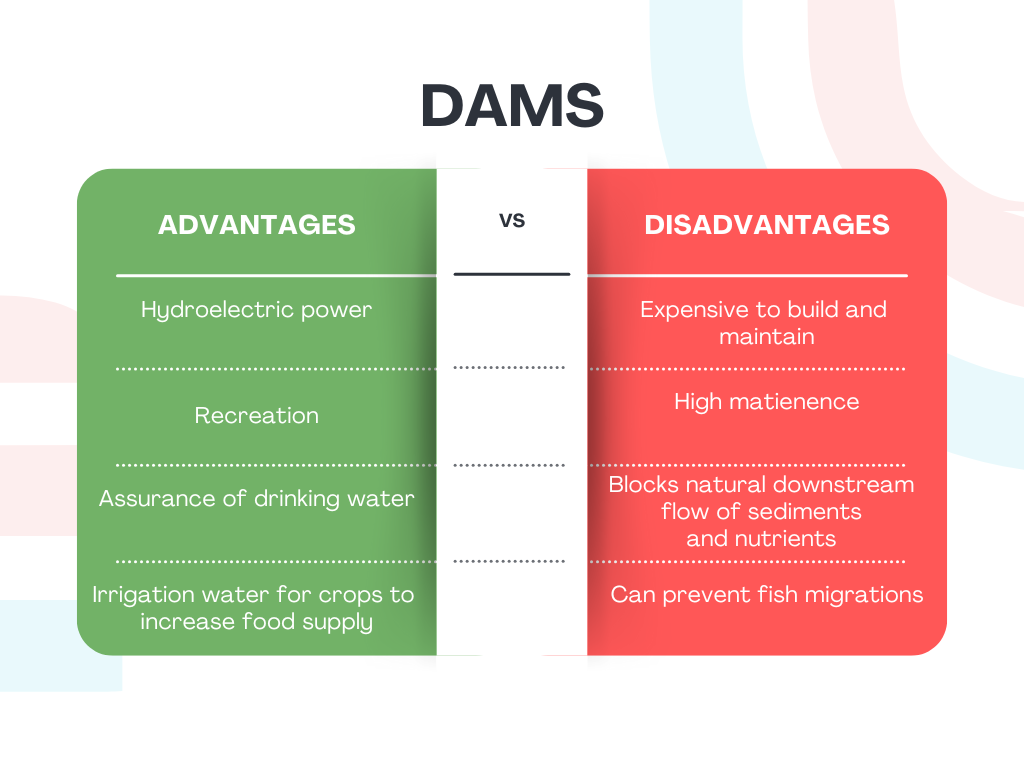APES Solid Waste and Ecological Footprint Reveiw
1/19
There's no tags or description
Looks like no tags are added yet.
Name | Mastery | Learn | Test | Matching | Spaced |
|---|
No study sessions yet.
20 Terms
CERCLA (Superfund)
Cleans up and provides money for hazardous waste sites
RCRA
“Cradle-to-Grave” act, designed to reduce and eliminate hazardous waste
Clean Air Act
Regulates air emissions from stationary and mobile sources to protect human health
Clean Water Act
protection of sea life and wildlife around the water by maintaining their environment
6 Criterion Air Pollutants
NO2, O3, SO2, CO, Pb, PM
Point Source Pollution
Pollution from an exact location/source
Non- Point Source Pollution
From an unknown/ un-exact source

Advantages and Disadvantages of Dams
Aquifer
Permeable layer of rock and sediment that contains groundwater
Unconfined Aquifer
Made of porous rock covered by soil, out of which water can easily flow
Ogallala Aquifer
Largest aquifer in the U.S. that has been overused for irrigation
Cone of Depression
An area lacking groundwater due to a rapid withdrawal by a well
Saltwater Intrusion
Infiltration of salt water in an area where groundwater pressure has been reduced from extensive drilling and pumping of wells
Turbidity
Murkiness of water
Love Canal
event which lead to the creation of the Superfund and CERCLA acts
Leachate
waste liquid that passes through landfills and picks up pollutants, considered hazardous waste
Leachate Collection System
Pipes inside a landfill that removes the leachate and carries it to the wastewater treatment plant
Monitoring Wells
Placed along perimeter of landfills to detect leaks of leachate and methane
Methane Collection Pipes
methane forms during anaerobic decomposition, it can be collected and used as fuel
Capping and Dry Tombing
Once a landfill is full and has reached the maximum permitted height, it’s covered with dirt and clay and then a plastic liner. This prevents any water from entering and becoming leachate.